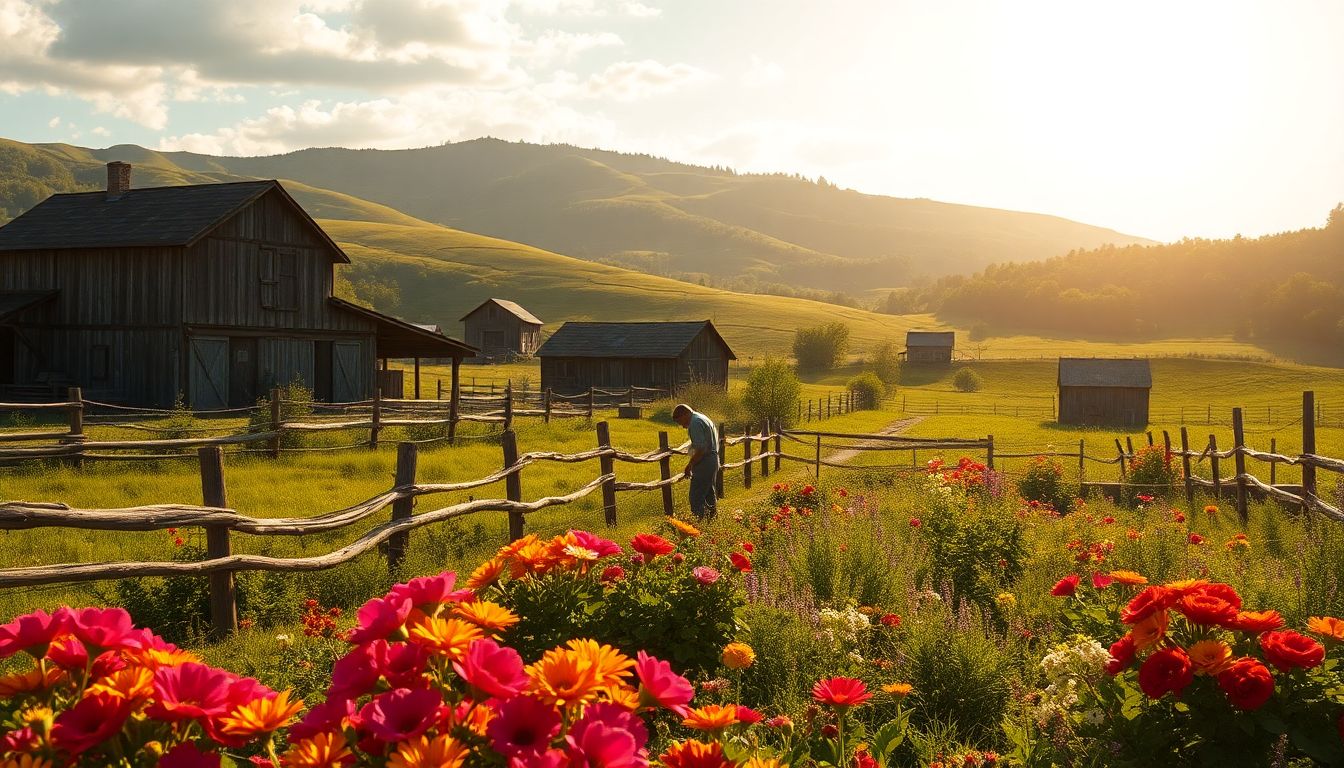
A Complete Guide to Self-Sufficiency
Homesteading is a lifestyle choice drawing more people in. With the world moving faster and our connection to food and nature fading, many are looking to simplify their lives by becoming more self-sufficient. Whether for financial freedom, sustainable practices, or community ties, the allure of homesteading is undeniable.
The Growing Interest in Self-Sufficiency
In recent years, the USDA reported a significant increase in the number of homesteaders, with over 35% growth in new small farms. The shift towards sustainable living reflects both a growing concern for the environment and a desire to manage personal finances more wisely. People are eager to connect with their roots and understand where their food comes from.
Homesteading appeals to many due to its promise of financial independence and the chance to cultivate a strong community. The idea of growing food, raising animals, and building a home resonates deeply with those seeking a more connected life.
Getting Started: Essential Steps for New Homesteaders
Assessing Your Resources and Goals
As you embark on your homesteading journey, consider these key factors:
- Land Availability: Do you have enough space for gardening and animals?
- Budget: Understand what you can afford for starting out and ongoing costs.
- Skills: What are your current skills? What do you want to learn?
- Climate: Is your area suitable for the crops and livestock you want?
Set realistic expectations. Start small—focus on one area like gardening or animal care. This allows for better management and gradual learning.
Finding and Preparing Your Land (If Applicable)
When choosing land, consider:
- Soil Quality: Nutrient-rich soil will lead to bountiful crops.
- Water Access: Ensure a reliable water source is available.
- Zoning Regulations: Check local laws for homesteading activities.
Preparation is key. Clear the land, test the soil, and install fencing to protect your crops and animals. A seasoned homesteader advises, “Always research your location thoroughly. It’s easier to start right than fix mistakes later.”
Mastering Essential Homesteading Skills
Gardening and Food Production
Growing your own food starts with choosing the right crops suited to your climate and soil type. Focus on these basic techniques:
- Planting: Know the right time for sowing seeds.
- Watering: Ensure your plants receive enough moisture.
- Pest Control: Learn organic methods to keep pests at bay.
Preserving your harvest is also essential. Try methods like canning, freezing, or drying to enjoy your produce year-round.
Animal Husbandry
Selecting suitable livestock is vital for your homestead. Consider:
- Types of Animals: Chickens, goats, or rabbits can be great options.
- Animal Care: Learn how to house, feed, and look after your animals’ health.
Be realistic about the commitment. Owning animals requires time and effort, so prepare accordingly.
Water Management and Conservation
Managing water is crucial in homesteading. Conservation techniques include:
- Water Harvesting: Collect rainwater for various uses.
- Storage Solutions: Keep large containers to store water effectively.
- Efficient Irrigation: Explore drip irrigation systems for conserving water.
Building a Sustainable Homestead Ecosystem
Waste Management and Composting
Composting enhances soil health and reduces waste. Key benefits include:
- Building nutrient-rich soil for gardening.
- Cutting down trash that ends up in landfills.
Basics of composting are simple. Use kitchen scraps, yard waste, and even paper products. Reduce waste by recycling and reusing materials wherever possible.
Energy Efficiency and Renewable Energy
Look for ways to lower energy consumption. This can mean:
- Using energy-efficient appliances.
- Considering renewable energy options like solar or wind.
A successful homestead shared their experience of installing solar panels, stating it drastically cut energy costs while reducing their carbon footprint.
Building Community and Connecting with Others
Networking with Other Homesteaders
Building connections with fellow homesteaders offers numerous benefits, such as:
- Sharing knowledge and resources.
- Finding local support and advice.
- Participating in skill-sharing events.
Seek out local homesteading groups and workshops. Community can make your journey more fulfilling and enjoyable.
Sharing Your Homestead Experience
Documenting your journey through blogging or social media can foster a sense of community. Consider:
- Hosting workshops or tours to teach others.
- Participating in farmers’ markets to share your produce.
Connecting with others can enhance your own learning and inspire others on their paths.
Conclusion: Embracing the Homesteading Journey
Homesteading is so rewarding and full of opportunities to learn and grow.
- Focus on starting small and gradually expanding your skills.
- Embrace challenges as part of the learning process.
- Cultivate a supportive community around you.
For those considering this path, take the first step today. The journey to a self-sufficient lifestyle awaits.
Key takeaways include:
